This article was co-authored by Mark Co, DPM. Dr. Mark Co is a Podiatrist who runs his own private practice in San Francisco, California. Dr. Co specializes in treatments for bunions, ingrown toenails, toenail fungus, warts, plantar fasciitis and other causes of foot pain. He also offers custom orthotics for the treatment and prevention of foot and ankle issues. Dr. Co completed a Master of Business Administration (MBA) at New York University and an MA in Electrical Engineering and Computer Science at Johns Hopkins University. Dr. Co also completed his DPM at the California School of Podiatric Medicine and a residency and internship at the Kaiser Permanente Medical Center, Santa Clara, California. Dr. Co was awarded San Francisco's "Top 3 Podiatrists" in 2018, 2019, and 2020. Dr. Co is also a member of the CPMA (American Podiatric Medical Association).
There are 10 references cited in this article, which can be found at the bottom of the page.
wikiHow marks an article as reader-approved once it receives enough positive feedback. In this case, 100% of readers who voted found the article helpful, earning it our reader-approved status.
This article has been viewed 68,643 times.
Hand-foot-and-mouth disease (HFMD) is a relatively common viral infection among infants and children, and it's characterized by mouth sores and rashes on the hands and feet. Our guide will show you how to spot the signs and what to do if you suspect your child has HFMD.
Steps
Recognizing Signs and Symptoms of HFMD
-
1Look out for fever and reduced appetite. HFMD usually affects children younger than 5 years old and the infection typically begins with a mild-to-moderate fever and loss of appetite.[1] The fevers in children with HFMD usually reach 101°F (38.3°C) or 102°F (38.9°C), which is the body's way of trying to stop the virus from multiplying and spreading. In addition to fever, look for loss of appetite at meal times, which is typical of most viral infections.
- The time between viral contact and the start of symptoms (known as the incubation period) is typically between three to seven days.[2]
- Young, pre-school kids are most often affected, although teens and adults do come down with HFMD occasionally.
- The most common time of year for HFMD outbreaks is in the summer and early autumn.
-
2Watch for sore throat and painful mouth sores. Although a fever is often the first sign of HFMD, after about one to two days of higher temperatures painful sores usually develop in the throat (causing a moderate-to-severe sore throat) and elsewhere in the mouth. The red sores are fairly small (2 or 3 mm in diameter) and quickly develop into blisters (vesicles), then they pop and become ulcers (the most painful stage). In addition to the throat, the most common areas for HFMD sores to appear are the tongue, gums and inner cheeks.[3]
- Blisters/ulcers from HFMD can be difficult to distinguish from canker and herpes sores. The main differences are canker sores rarely affect the throat and gums, whereas herpes sores almost always appear on the outer lips.
- The discomfort created by the throat and mouth sores make it painful to eat, which may further reduce appetite.
Advertisement -
3Expect to see a rash on the hands and feet. If the throat and mouth sores are indicative of HFMD (and not cankers, herpes or some other viral infection), then a rash will invariably develop on the hands and feet within an additional one to two days. The small red blisters characteristically appear on the palms of both hands and the soles of both feet. Less commonly, the blisters can also appear on the knees, buttocks, genitals and elbows.
- In addition to the small blisters, HFMD causes the skin on the hands and feet to appear like a rash, although it's not usually itchy — unlike chicken pox, which is another type of infection that HFMD often mimics.
- Fingernail and toenail loss can occur with HFMD, particularly in children, within about two to four weeks of coming down with the condition.
- Soaking the affected feet in 3 US quarts (2,800 mL) of warm water mixed with 2-3 tablespoons (48-72 g) of Epsom salts can help relieve some of the pain. Don’t soak the feet for more than 15 minutes, though.[4]
-
4Prepare for malaise and headaches too. Other symptoms commonly associated with HFMD (and most other viral and bacterial infections) are dull/achy headaches and malaise — a general unwell and tired feeling.[5] These symptoms and the ones mentioned above usually last for between five to seven days. In the vast majority of cases the infection is self-limiting and doesn't require medical attention.
- With malaise, children may not want to get out of bed in the morning, or play during the afternoon or stay up much past dinner time.
- Headaches are difficult to detect in young children who can't communicate well, so look for reduced attention span, unexplained crying, head holding (with their hands) and avoidance of loud sounds and/or well-lit areas of the house.
- Nausea/vomiting is not common with HFMD (and many other viruses that affect the throat and mouth), but it is characteristic of bacterial infections and food poisoning.
- Not everyone gets all of these symptoms (especially adults who have more mature immune systems to fight the infection), but non-symptomatic people can still pass the virus on to others.
Treating HFMD
-
1Be patient and remain hydrated. HFMD is not serious in most cases, so letting it run its course (about a week) is the best way of gaining natural immunity and preventing future infections. As such, be patient and keep well hydrated, which is good advice for any viral infection, but particularly important for HFMD because of the pain associated with swallowing. Fevers and nights sweats cause your body to lose more water than normal, so start with drinking eight 8-ounce glasses per day to rehydrate yourself and keep your mucous membranes of your mouth/throat moist.
- Consider buying some mouthwash, oral spray or lozenges from the pharmacy that contain compounds that numb or dull a sore throat. They can be effective to reduce pain and make it easier to consume liquids and soups.
- You may also want to encourage hydration by offering something cold that might soothe the throat, like a sugar-free popsicle.
- Common signs of dehydration include: dry skin and mucous membranes, sunken-looking eyes, reduced urination, dark-colored urine, irritability, confusion and weight loss.[6]
-
2Consult your doctor about medications. There's no specific treatment for HFMD in terms of medication, in part because the infection is not serious and usually clears up on its own within a week to 10 days;[7] however, over-the-counter medications such as acetaminophen (Tylenol) can help reduce a fever, and ibuprofen (Advil, Motrin) can reduce inflammation and pain associated with blisters and ulcers. Remember that aspirin is never a good idea for young children and ibuprofen may not be either, so ask your doctor.
- A mild-to-moderate fever is beneficial to fight viral infections as noted above, but temperatures of 103°F (39.4 °C) or greater in children should likely be managed with medication.
- Drugs called antivirals are recommended for infections within people who have a high risk of complications due to weak immune systems. Antivirals kill viruses or prevent them from reproducing in the body. In rare cases, antivirals may be prescribed for HFMD, such as acyclovir (Zovirax), valacyclovir (Valtrex) or famciclovir.
- Note that valacyclovir and famciclovir medications are only approved for use in adults, not kids.
-
3Consider taking colloidal silver. Colloidal silver (also called atomic or ionic silver) is a liquid preparation containing small clusters of electrically charged silver particles. The medical literature reveals that colloidal silver has powerful antiviral properties and can kill a wide-variety of viruses, although there is no quality research demonstrating its effect on HFMD as of yet.[8] Even still, considering its relative safety, lack of side effects and affordability, it might be worth a shot for treating HFMD.
- The effectiveness of colloidal silver against viruses depends on size (particles should be less than 10 nm in diameter) and purity (no salts or protein in the solution).[9]
- Colloidal silver can be made at home with some specific supplies, or purchased from most health food and supplement stores.
- Try gargling with colloidal silver to help relieve throat and mouth sores, and spray some on your hands and feet to prevent outbreaks of blisters.
- Silver solutions are usually considered non-toxic even in high concentrations, but protein-based solutions made by some pharmaceutical companies can increase the risk of argyria — skin discoloration due to silver compounds getting trapped there.
Preventing HFMD
-
1Avoid contact with people who show signs or symptoms. HFMD is mild-to-moderately infectious and is spread by contact (usually via the mouth) with an infected person's: nasal secretions, throat mucous, saliva (including droplets sprayed from coughing and sneezing), fluid from blisters and feces (poop).[10] Therefore, if you see anyone (especially young children) looking ill and complaining or exhibiting the above mentioned symptoms, avoid them until they are recovered.
- You may have to keep your child out of preschool or elementary school for a week to either prevent getting HFMD or spreading it to others.
- Teach your child to notify adults if they feel ill or see symptoms such as red spots or rashes on the skin of other children.
-
2Practice good hygiene. Because HFMD is contagious and transmitted through touch and body fluids, keep your hands (or those of your children) disinfected. Always wash hands with soap and water, especially after using the toilet and changing diapers. Try not to touch your mouth with your hands, especially after you've touched someone else. Avoid sharing eating utensils or cups/glasses with people with HFMD or other viral infections.
- Regularly disinfecting countertops, tables, chairs, toys and other surfaces which are commonly touched is a good preventative approach.
- Disinfect your hands (and your children's hands) multiple times per day with regular soap, and don't go overboard on the hand sanitizer because it can promote the growth of "super bugs" that are resistant to medications.
- Natural disinfectants appropriate for household use include white vinegar, lemon juice, salt water, diluted bleach and hydrogen peroxide.
-
3Maintain a strong immune system. With any type of infection, true prevention depends on the strong and healthy functioning of your immune system. Your immune system is comprised of specialized cells that search and destroy potential pathogens such as viruses, but when the system is weak, disease-causing microorganisms grow and spread virtually unchecked. As such, it's not surprising that those most at risk for infections, including HFMD, are young children and the immunocompromised.[11] Therefore, focus on boosting your immune system in order to stay healthy and be able to fight off HFMD successfully.
- Getting more sleep (and better quality sleeps), eating more fresh fruit and veggies, cutting down on refined sugars (soda pop, candy), reducing your alcohol intake, quitting smoking, practicing good hygiene and exercising regularly are all proven ways to keep your immune system strong.[12]
- Dietary supplements that can boost immunity include: vitamin C, vitamin D, zinc, echinacea and olive leaf extract.
- Vitamin C and olive leaf extract also have antiviral properties, which may also help to prevent or fight off HFMD.
Expert Q&A
-
QuestionIs lotion good for your feet if you have hand, foot, and mouth disease?
 Mark Co, DPMDr. Mark Co is a Podiatrist who runs his own private practice in San Francisco, California. Dr. Co specializes in treatments for bunions, ingrown toenails, toenail fungus, warts, plantar fasciitis and other causes of foot pain. He also offers custom orthotics for the treatment and prevention of foot and ankle issues. Dr. Co completed a Master of Business Administration (MBA) at New York University and an MA in Electrical Engineering and Computer Science at Johns Hopkins University. Dr. Co also completed his DPM at the California School of Podiatric Medicine and a residency and internship at the Kaiser Permanente Medical Center, Santa Clara, California. Dr. Co was awarded San Francisco's "Top 3 Podiatrists" in 2018, 2019, and 2020. Dr. Co is also a member of the CPMA (American Podiatric Medical Association).
Mark Co, DPMDr. Mark Co is a Podiatrist who runs his own private practice in San Francisco, California. Dr. Co specializes in treatments for bunions, ingrown toenails, toenail fungus, warts, plantar fasciitis and other causes of foot pain. He also offers custom orthotics for the treatment and prevention of foot and ankle issues. Dr. Co completed a Master of Business Administration (MBA) at New York University and an MA in Electrical Engineering and Computer Science at Johns Hopkins University. Dr. Co also completed his DPM at the California School of Podiatric Medicine and a residency and internship at the Kaiser Permanente Medical Center, Santa Clara, California. Dr. Co was awarded San Francisco's "Top 3 Podiatrists" in 2018, 2019, and 2020. Dr. Co is also a member of the CPMA (American Podiatric Medical Association).
Podiatrist If it relieves your symptoms, sure, although you probably don't want to apply lotion to any broken skin or open wounds. In terms of a lotion, you want to match the thickness of the lotion to the thickness of the skin, so make sure you use a lotion designed specifically for moisturizing your feet. Aquaphor and Eucerin are great options!
If it relieves your symptoms, sure, although you probably don't want to apply lotion to any broken skin or open wounds. In terms of a lotion, you want to match the thickness of the lotion to the thickness of the skin, so make sure you use a lotion designed specifically for moisturizing your feet. Aquaphor and Eucerin are great options! -
QuestionI'm 18 but i have HMFD. Is that normal?
 Chris M. Matsko, MDDr. Chris M. Matsko is a retired physician based in Pittsburgh, Pennsylvania. With over 25 years of medical research experience, Dr. Matsko was awarded the Pittsburgh Cornell University Leadership Award for Excellence. He holds a BS in Nutritional Science from Cornell University and an MD from the Temple University School of Medicine in 2007. Dr. Matsko earned a Research Writing Certification from the American Medical Writers Association (AMWA) in 2016 and a Medical Writing & Editing Certification from the University of Chicago in 2017.
Chris M. Matsko, MDDr. Chris M. Matsko is a retired physician based in Pittsburgh, Pennsylvania. With over 25 years of medical research experience, Dr. Matsko was awarded the Pittsburgh Cornell University Leadership Award for Excellence. He holds a BS in Nutritional Science from Cornell University and an MD from the Temple University School of Medicine in 2007. Dr. Matsko earned a Research Writing Certification from the American Medical Writers Association (AMWA) in 2016 and a Medical Writing & Editing Certification from the University of Chicago in 2017.
Family Medicine Physician Typically HFMD affects young children, but it has been known to affect people of all ages.
Typically HFMD affects young children, but it has been known to affect people of all ages. -
QuestionDuring what ages is HFMD most active?
 Chris M. Matsko, MDDr. Chris M. Matsko is a retired physician based in Pittsburgh, Pennsylvania. With over 25 years of medical research experience, Dr. Matsko was awarded the Pittsburgh Cornell University Leadership Award for Excellence. He holds a BS in Nutritional Science from Cornell University and an MD from the Temple University School of Medicine in 2007. Dr. Matsko earned a Research Writing Certification from the American Medical Writers Association (AMWA) in 2016 and a Medical Writing & Editing Certification from the University of Chicago in 2017.
Chris M. Matsko, MDDr. Chris M. Matsko is a retired physician based in Pittsburgh, Pennsylvania. With over 25 years of medical research experience, Dr. Matsko was awarded the Pittsburgh Cornell University Leadership Award for Excellence. He holds a BS in Nutritional Science from Cornell University and an MD from the Temple University School of Medicine in 2007. Dr. Matsko earned a Research Writing Certification from the American Medical Writers Association (AMWA) in 2016 and a Medical Writing & Editing Certification from the University of Chicago in 2017.
Family Medicine Physician During childhood HFMD is the most active, particularly in children younger than seven years old.
During childhood HFMD is the most active, particularly in children younger than seven years old.
Warning
- In rare cases, HFMD can trigger meningitis (spinal infection) and/or encephalitis (brain inflammation). As such, contact your doctor immediately if you or your child experience a high fever, severe headache, stiff neck, back pain and/or paralysis in your limbs.[13]
References
- ↑ http://www.cdc.gov/hand-foot-mouth/about/signs-symptoms.html
- ↑ https://www.nlm.nih.gov/medlineplus/ency/article/000965.htm
- ↑ http://www.medicinenet.com/hand-foot-and-mouth_syndrome/article.htm
- ↑ Mark Co, DPM. Podiatrist. Expert Interview. 21 April 2020.
- ↑ https://www.nlm.nih.gov/medlineplus/ency/article/000965.htm
- ↑ https://www.nlm.nih.gov/medlineplus/ency/article/000965.htm
- ↑ http://www.mayoclinic.org/diseases-conditions/hand-foot-and-mouth-disease/basics/treatment/con-20032747
- ↑ http://www.freegrab.net/refs%20silver.htm
- ↑ http://www.freegrab.net/refs%20silver.htm
- ↑ http://www.mayoclinic.org/diseases-conditions/hand-foot-and-mouth-disease/basics/causes/con-20032747
- ↑ http://www.mayoclinic.org/diseases-conditions/hand-foot-and-mouth-disease/basics/risk-factors/con-20032747
- ↑ http://www.health.harvard.edu/staying-healthy/how-to-boost-your-immune-system
- ↑ http://www.cdc.gov/hand-foot-mouth/about/complications.html
About This Article
To recognize hand, foot, and mouth disease in your child, look for mouth sores and skin rashes on their hands and feet. You should also keep an eye out for fever, loss of appetite, a sore throat, or headaches and a general tired and unwell feeling, which are all common symptoms of the disease. In most cases, the disease is not serious and will go away on its own with home care. However, to speed up recovery, keep your child well hydrated, and consider giving them mouthwash or oral spray to help soothe their sore throat. For more tips from our Medical co-author, like how to treat hand, foot, and mouth disease with colloidal silver, keep reading!










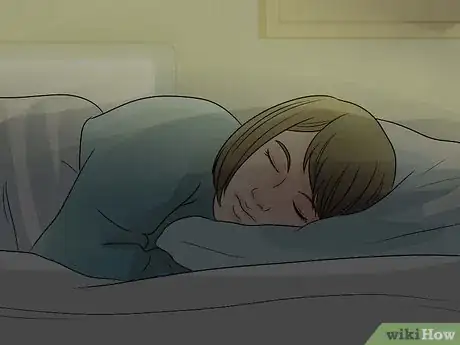
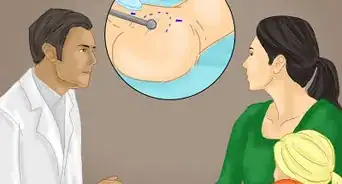


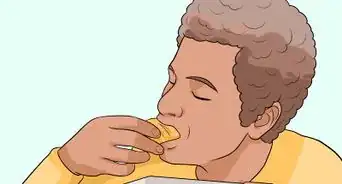

-Step-11-Version-2.webp)

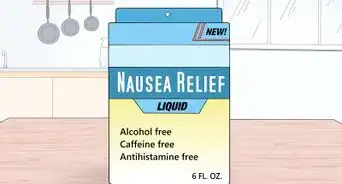



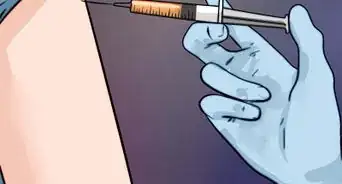
















































Medical Disclaimer
The content of this article is not intended to be a substitute for professional medical advice, examination, diagnosis, or treatment. You should always contact your doctor or other qualified healthcare professional before starting, changing, or stopping any kind of health treatment.
Read More...